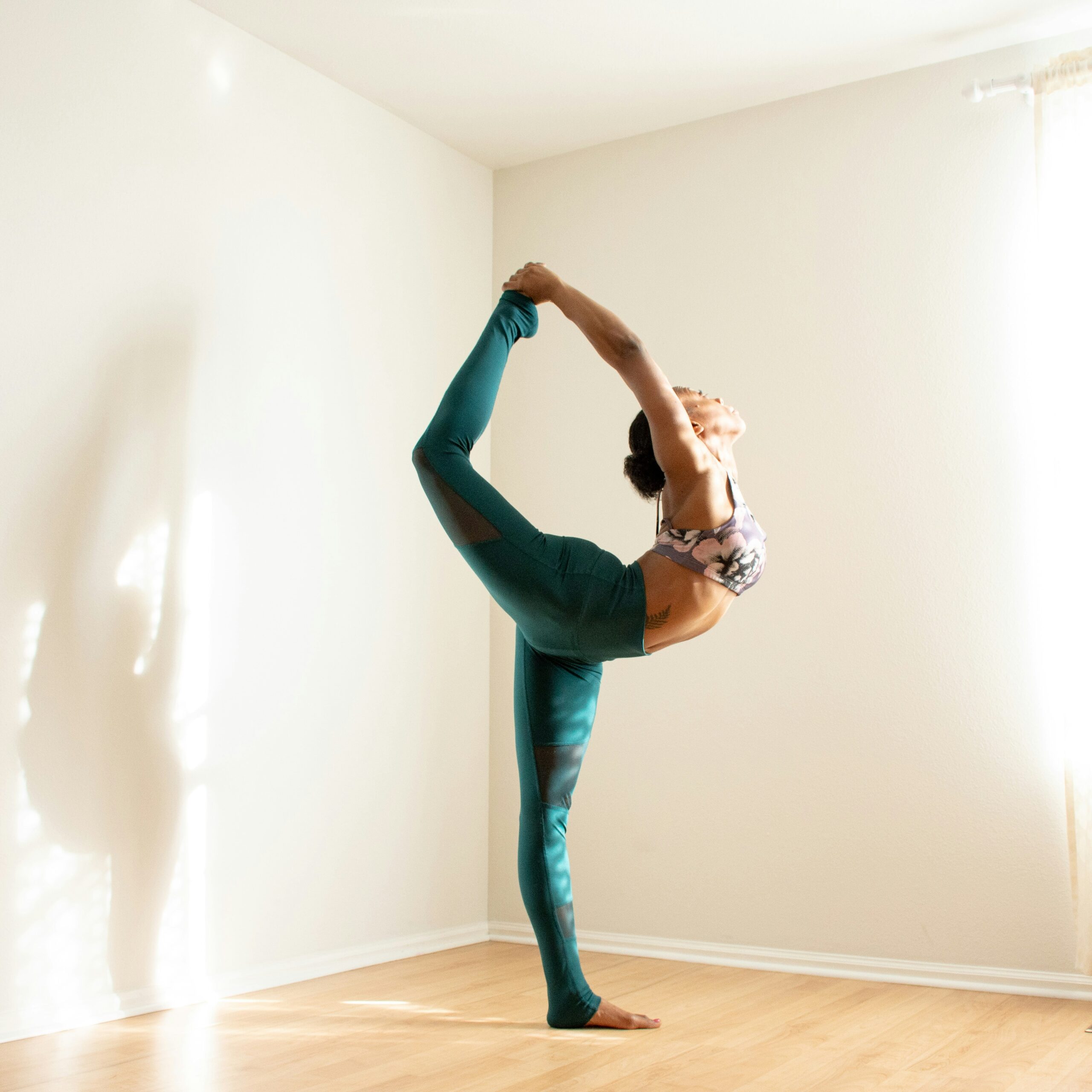Unlocking Your Potential Through Mindful Movement in Sports and Fitness
Have you ever felt like your workouts are just a series of repetitive motions, a checklist to tick off before you can finally sit down with that well-deserved post-exercise snack? (You know, the one that sometimes feels like a reward for enduring the sweat and strain?) Let’s face it: fitness can often feel like a grind, and sports training can become a monotonous affair. But what if I told you there’s a way to transform these routines into something more profound, something that truly unlocks your potential? Enter the world of mindful movement.
The Essence of Mindful Movement
At its core, mindful movement is about being present in your body as you engage in physical activity. It’s akin to meditation but with a twist—you’re not just sitting still and breathing; you’re actively participating in the dance of life (or, at least, your version of it, which might resemble a less-than-graceful shuffle). This concept has roots in various disciplines, from yoga and tai chi to modern sports psychology. The idea is to cultivate a deeper awareness of your body, breath, and the space around you.
But let’s break this down a bit. Mindful movement can help you:
- Enhance your focus and concentration
- Improve your physical performance
- Boost your mental resilience
- Reduce the risk of injuries
- Foster a more profound connection to your body
Now, before you roll your eyes at the mention of “mindfulness,” let me assure you: this isn’t some new-age mumbo jumbo. Research has shown that athletes who practice mindfulness techniques often see improvements in their performance metrics. I mean, who doesn’t want to shave a few seconds off their mile time or hit that perfect golf swing? Let’s dig into how you can incorporate mindful movement into your routine.
The Science Behind Mindfulness and Movement
Studies suggest that mindfulness can lead to increased performance, better emotional regulation, and even lower levels of perceived stress. For instance, a significant number of athletes report feeling more in tune with their bodies after practicing mindfulness techniques. This heightened awareness allows them to react faster and make better decisions during competition. (And let’s be real—who hasn’t wished for the ability to instantly react to a surprise curveball during a game?)
In one study published in the Journal of Sports Psychology, participants who engaged in mindfulness training showed improvements in their athletic performance compared to those who did not. It seems that when athletes learn to focus their minds, they can also harness their physical prowess more effectively. So, how do you get started?
Integrating Mindfulness into Your Fitness Routine
Integrating mindful movement into your sports or fitness routine doesn’t require a complete overhaul. In fact, it can be as simple as shifting your perspective on how you approach your exercises. Here are some practical tips to consider:
1. Start with Your Breath
Breathing is the foundation of mindfulness. Before you even think about lacing up your sneakers or rolling out your yoga mat, take a moment to focus on your breath. Inhale deeply through your nose, allowing your belly to expand, then exhale through your mouth. Repeat this several times. Doing so can help ground you and prepare your mind and body for the workout ahead.
2. Set an Intention
Before each session, set a specific intention for what you want to achieve. Whether it’s simply to enjoy the movement, push your limits, or find joy in the process, having a clear intention can guide your focus throughout the workout. (Some days, my intention is just to survive the workout—I’m not ashamed to admit that!)
3. Engage Your Senses
As you move, pay attention to the sensations in your body. Notice the feeling of your feet on the ground, the rhythm of your heartbeat, or the sound of your breath. These details can anchor you in the present moment and enhance your overall experience.
4. Embrace the Flow
Mindful movement often emphasizes fluidity. Whether you’re running, swimming, or practicing yoga, aim to move with grace and ease. This doesn’t mean you have to be perfect; rather, it’s about finding a rhythm that feels natural to you. I remember my first yoga class, where I stumbled through poses like a newborn giraffe—awkward but amusing! Ultimately, it’s about the journey, not perfection.
5. Reflect
After your workout, take a few moments to reflect on your experience. What did you notice? How did your body feel? This reflection can help you internalize the benefits of mindful movement and identify areas for improvement in future sessions.
Mindful Movement in Various Sports
Mindful movement isn’t a one-size-fits-all approach. Different sports and activities can benefit from unique applications of mindfulness. Let’s explore how this practice can enhance performance across various disciplines.
Running
For runners, mindfulness can transform the often monotonous experience of logging miles into a meditative practice. Instead of zoning out with your favorite playlist, focus on the rhythm of your feet hitting the pavement, the air filling your lungs, and the landscape around you. Some runners even practice “barefoot running” to heighten their connection to the ground—a practice that can be both liberating and challenging.
Yoga
Yoga is perhaps the epitome of mindful movement. Each pose requires concentration and awareness, allowing practitioners to connect deeply with their bodies and minds. As you flow through your asanas, notice how each posture feels and how your body responds. The emphasis on breath in yoga underscores the importance of mindfulness, making it an ideal platform for enhancing overall awareness.
Strength Training
Strength training often emphasizes technique, which aligns beautifully with mindful movement. Each lift or rep can become a moment of awareness if you focus on your form, your breath, and the muscles engaged. Instead of mindlessly pushing through sets, take time to feel the full range of motion and appreciate the strength within you. Trust me, your body will thank you (and you might even find you can lift a bit more when you’re fully engaged).
Team Sports
In team sports, mindfulness can improve communication and cohesion among players. Being present allows athletes to respond more effectively to their teammates and opponents. The beauty of sports like soccer or basketball is that they’re dynamic and ever-changing—practicing mindfulness can help you stay grounded and focused amidst the chaos. It’s a bit like being a juggler, but instead of balls, you have teammates, opponents, and a ball to keep track of!
Overcoming Challenges to Mindful Movement
Sure, it sounds great in theory, but let’s not kid ourselves—practicing mindful movement comes with its own set of challenges. Life can be hectic, and it’s easy to fall back into autopilot mode. However, recognizing these challenges is the first step toward overcoming them.
Distractions
In our fast-paced world, distractions are everywhere. From the ping of your phone to the latest episode of that binge-worthy show waiting for you at home, it’s easy to lose focus. To counteract this, I suggest creating a dedicated space for your workouts—an area free from interruptions. (Trust me, your yoga mat does not want to share space with your laundry!)
Self-Doubt
Another common barrier to mindful movement is self-doubt. You might find yourself questioning whether you’re doing it “right” or if you’re “good enough.” Remember, mindfulness isn’t about perfection; it’s about presence. Embrace the process, and be gentle with yourself. (I often remind myself that even the pros had to start somewhere, and they probably also tripped over their own feet a time or two!)
Time Constraints
Let’s face it: we all have busy lives, and carving out time for mindful movement can feel like a luxury. However, even short bursts of mindfulness can be beneficial. You don’t need an hour to meditate or practice yoga; a few minutes of focused breathing can do wonders. So, the next time you feel pressed for time, remember that every little bit counts.
Mindful Movement Beyond the Gym
Mindful movement isn’t limited to traditional workouts. It can be integrated into everyday activities as well. Whether you’re walking your dog, gardening, or even doing household chores, there are opportunities to practice mindfulness.
Walking
Next time you take a stroll, try to notice your surroundings—feel the ground beneath your feet, appreciate the sounds of nature, and take in the sights. Walking mindfully can turn a mundane task into a meditative experience. (And who knows? You might even find that inspiration for your next grand idea while out on your walk!)
Household Chores
Yes, even washing dishes or folding laundry can become an exercise in mindfulness. Instead of grumbling about the chores, focus on the sensations—the warmth of the water, the texture of the fabric, or the smell of the soap. It’s a surprising way to turn chores into an exercise for mind and body.
Real-Life Success Stories
While the science and theory behind mindful movement are compelling, sometimes real-life stories resonate the most. Many athletes have shared how incorporating mindfulness transformed their performance and well-being.
Case Study: A Professional Runner
Take the example of a professional marathon runner who struggled with anxiety before races. She decided to incorporate mindfulness techniques into her training, focusing on her breath and visualization. As a result, she discovered a newfound calmness and clarity that helped her achieve her personal best. (Spoiler alert: she didn’t just run; she soared!)
Case Study: A Weekend Warrior
Then there’s the story of a weekend warrior who simply wanted to enjoy his soccer games without feeling winded. By practicing mindful movement, he learned to pace himself, listen to his body, and enjoy the camaraderie of the game. He went from just participating to truly thriving on the field, which is a win in my book!
Conclusion: Your Journey to Mindful Movement
As you embark on your journey to unlock your potential through mindful movement, remember that it’s not about perfection; it’s about progress. Each step you take toward being more present in your body will lead to improvements in your performance and overall well-being.
Mindful movement is a personal journey, one that will evolve and adapt to your unique needs and experiences. Whether you’re an elite athlete or a casual fitness enthusiast, there’s always room to grow. So, lace up those shoes (or roll out that mat) and give it a try—who knows what you might discover about yourself along the way?
In the words of a wise philosopher (or maybe just a fitness guru I once overheard), “The body achieves what the mind believes.” So, let’s get moving—mindfully!




